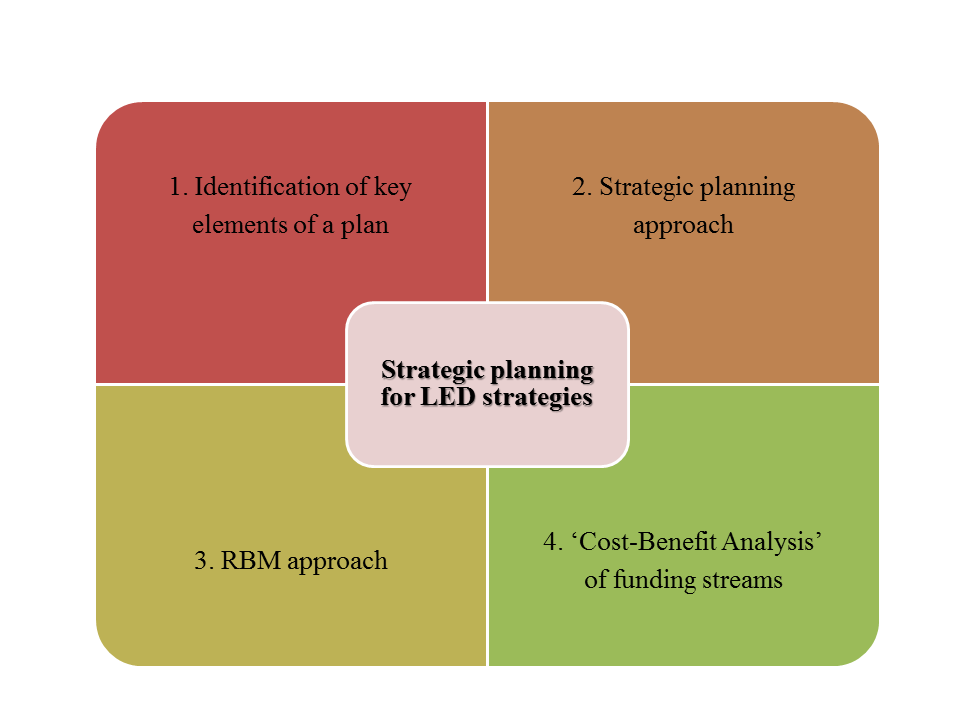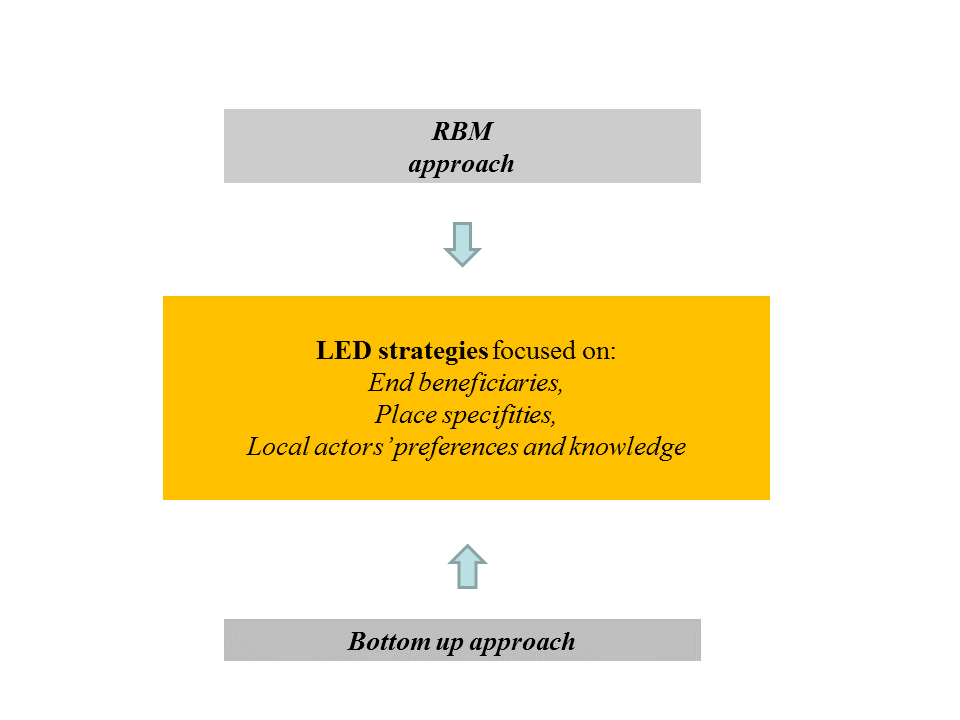Crafting local development strategies
Formulating local development strategies is not an easy task. Never.
There are many economic, social and cultural factors to take into consideration.
There are many useful approaches, technical tools and best practices.
More importantly, many sound guidelines have been produced by international organisations, agencies of the UN, national agencies dealing with international cooperation, NGOs and independent experts.
As a result, this article should be regarded as a personal hands-on aide-memoire made available to decision-makers, experts and practitioners eager to further investigate into best ways to improve Local Economic Development (LED).
From my way of thinking, LED strategies are the outcome of a results-oriented process structured around the four building blocks summarized in the following chart:
1. The identification of the key elements of a plan (project):
• Target group (end beneficiaries),
• ‘Main’ policy area (e.g. tourism, competitiveness of SMEs, youth unemployment, social inclusion, etc.) [1],
• Localization (or, if you prefer, territorial dimension of the plan).
2. A strategic planning approach to the formulation of a local development plan, which answers the following questions [2]:
• Where are we now? (baseline)
• Where do we want to go? (vision/purpose of the plan)
• How do we get there? (mission/process)
• How do we know if we have attained long lasting results efficiently? (monitoring and evaluation).
3. The adoption of the Results-Based Management approach (RBM approach), with a compelling focus on end beneficiaries’ problems,
4. An all through analysis of potential funding streams (‘cost-benefit analysis’ of funding streams).
Chart 1 – Building blocks of LED strategies informed on a strategic planning approach
In focus: Results-Based Management approach and the pivotal role of end beneficiaries
Basically, Results-Based Management approach is a particular type of logic models, that date back to the 1970s.
Unlike the traditional logic models, the RBM approach lays emphasis on expected results and puts end beneficiaries first [3].
Fully adopting the RBM approach, thus, the formulation of the plan (project) hinges on problems, needs and wants of end beneficiaries and the local community at large.
The following chart indicates that the right identification of problems and desiderata of end beneficiaries is regarded as a key component in the RBM approach.
Chart 2 – Putting end beneficiaries first
Acknowledging the crucial role of a correct identification of end beneficiaries’ problems also implies that the question ‘for whom are we creating value?’ [4] is key to not only successful enterprises but also effective LED strategies. This point will be dealt with further in new posts on this blog over the year.
To conclude, I increasingly hold firmly to the opinion that in order to craft an effective LED strategy we should:
- First, start adopting a strategic planning approach, that builds on widely acknowledged concepts such as vision, mission, competitive advantages and so on [5], but without following top-down or, even worse, blueprint procedures.
- Second, follow the Results-Based Management approach, with a well founded focus on the problems and wants of end beneficiaries.
- Third, involve end beneficiaries of the plans and the local community at large. As aforementioned, this choice helps to improve the formulation of the plan (project). More importantly, it is widely claimed that a greater degree of involvement of the local community is conducive to higher levels of their commitment to the plan, ultimately enhancing their effectiveness.
*******
[1] As a rule, LED strategies encompass several integrated inter-sectoral policy interventions. This is why I do not refer to policy area in a generic way. That said, it is well known that within a LED strategy we can always identify a pivotal policy area (‘main’ policy area).
[2] See: DFID (2003), Tools for Development. A Handbook for Those Engaged in Development Activity. Vers. 15.1, London
UN-HABITAT, ECOPLAN INTERNATIONAL (2005), Promoting Local Economic Development through Strategic Planning. Volume 1. Quick Guide , UN Habitat for a Better Urban Future
[3] See: BRITISH OVERSEAS NGOs for DEVELOPMENT (2006), A BOND Approach to Quality Standards in NGOs: Putting Beneficiaries First, BOND Networking for International Development
[4] See: OSTERWALDER A., PIGNEUR Y. (2010), Business Model Generation, Wiley and Sons, Hoboken, New Jersey
[5] See: KAY J. (1993), Foundations of corporate success, Oxford UP, Oxford,
FRIEND G., ZEHLE S. (2009), Guide to Business Planning, The Economist Publ., London


